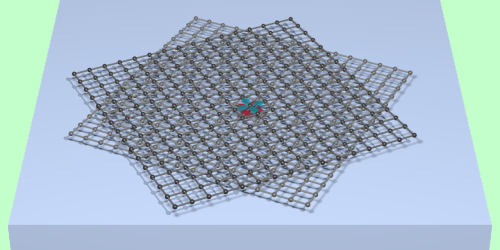High-Temperature Majoranas
Majorana zero modes (MZMs) are collective electronic states that could potentially enable error-reduced quantum computing. Usually, these states require extremely cold conditions—not much above absolute zero. A new theoretical proposal imagines MZMs forming at a “balmy” 90 K [1]. The scheme relies on twisted bilayers of a high-temperature superconductor placed on top of a topological insulator. The predicted MZMs would inhabit superconducting vortices on the surface of the insulator.
To make an MZM requires two ingredients: superconductivity and spin-orbit coupling. Results of experiments with nanowires bridging two superconductors have been interpreted as signatures of MZMs (see Viewpoint: Using “Noise” to Detect Majorana States), but lingering doubts remain. Many groups are therefore searching for MZM confirmation in other experimental setups. One early proposal involved connecting a conventional superconductor to a topological insulator (TI) with spin-orbit coupling, but experimental attempts failed to find an MZM signal.
Marcel Franz from the University of British Columbia, Canada, and his colleagues have revisited the superconductor-TI idea, but their design calls for an unconventional superconductor—specifically, a high-temperature cuprate superconductor. Cuprates have been overlooked in MZM proposals because their excitation spectrum does not have a gap. An ungapped spectrum means that low-energy excitations will drown out any potential signal of an MZM. The new design by Franz and colleagues overcomes this problem by using two layers of cuprates whose lattices have an angular offset. A bilayer with this twisted arrangement is predicted to have the desired energy gap.
The team modeled a setup with twisted cuprate layers on top of a topological insulator. Their calculations showed that an MZM should be visible as a zero-bias peak in scanning tunneling microscopy scans.
–Michael Schirber
Michael Schirber is a Corresponding Editor for Physics Magazine based in Lyon, France.
References
- A. Mercado et al., “High-temperature Majorana zero modes,” Phys. Rev. Lett. 128, 137002 (2022).




